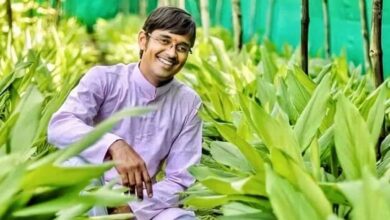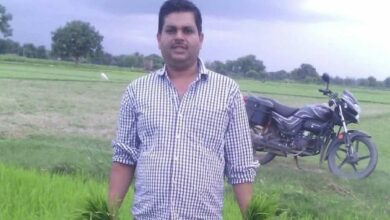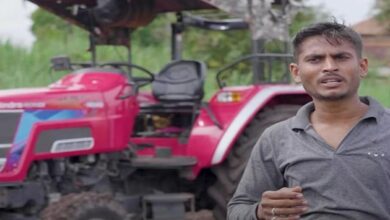Revolutionizing Bete: This farmer of Assam brought revolution in production of betel leaf cultivation with new technology
Revolutionizing Bete: In the heart of India’s farming area, where customs are frequently resistant to change, a forward-thinking farmer is revolutionizing the production of betel leaves. Dhoniram Chetia, a native of Pengaree in Digboi, Assam, where traditional ways have long been the standard, has adopted a cutting-edge technology that is revolutionizing the cultivation of betel leaves. Instead of placing betel plants 5–6 feet apart as is customary, Chetia’s creative approach maximizes available area and significantly increases yield.

A Contemporary Method for Cultivation
It was clear from the media team’s recent visit to Chetia’s farm that his method is nothing short of innovative. In contrast to the conventional technique, which spreads betel vines across a wider area, Chetia places his betel vines in both rows and in between rows at a distance of just two feet. With this little setup, four betel vines may grow in a mere 2 square feet of area. Making sure that every vine is the same age is essential to the success of this technique. Because the vines are not competing with one another, growth is consistent and yield is maximized.
Chetia’s approach is really powerful and visually arresting. The vines are less likely to overshadow one another by maintaining consistent growth and equal spacing between them, which is a typical problem with older approaches. With each vine receiving the proper amount of sunshine and nutrients thanks to this thoughtful design, the plants will be healthier and produce a larger crop.
Benefits of the Novel Method
Greater Production in Less Space: One of Chetia’s method’s most important benefits is their capacity to increase production without needing more space. Farmers may grow more vines in the same area by using Chetia’s technology, while traditional betel leaf farming requires more acreage. In addition to making the most use of the available area, this raises output levels overall. We can generate more by utilizing less room, as Chetia himself observes. For us, this method is revolutionary.
Harvesting the easy way: Traditionally, harvesting betel leaves required labor-intensive work because each vine had to be separated. Chetia’s technique makes this procedure easier by enabling the simultaneous harvesting of many vines. This productivity lowers labor expenses and simplifies the harvesting procedure, making it easier to handle and taking less time. “Harvesting is now very simple. We may save time and effort by gathering leaves from many vines at once, says Chetia.
Fertilization and Watering: Two essential elements of betel leaf cultivation are fertilization and watering. Chetia’s compact planting layout makes it possible to use these resources more quickly and effectively. By tending to four vines at once, he makes sure that water and nutrients are applied uniformly, encouraging healthy development and cutting down on waste. We can apply water and nutrients more efficiently using this strategy. Chetia says, “It’s a more economical use of resources.”
Possibilities for Integrated Farming: Despite their narrow spacing, betel vines provide chances for integrated farming. The gaps between the vines may be used by farmers to grow different kinds of crops or to implement mixed farming methods. In addition to increasing output, this connection supports a more varied and long-lasting agricultural ecology. We can make the most of every square inch of ground we have by growing different crops in the spaces between the vines, as Chetia puts it.
Test to Victory
Small-scale trials were the first step in Chetia’s journey with this innovative technique. At first wary, he kept a close eye on the outcomes of his strategy to make sure it worked. His decision to apply the approach to a wider region was prompted by the first experiments’ success. The successful results affirmed his strategy and demonstrated its broad applicability.
Dhoniram Chetia’s tale is much more than simply his own success; it also signifies a dramatic change in betel leaf growing methods. His creative approach may encourage other farmers to abandon conventional wisdom in favor of cutting-edge approaches that provide higher production and efficiency. “I am eager to see how other farms might benefit from this approach. It can work for a lot more others if it works for me, says Chetia.
The success story of Dhoniram Chetia demonstrates the value of innovation in agriculture. In addition to increasing output and efficiency, his cutting-edge method of betel leaf cultivation opens the door for integrated agricultural techniques. Chetia’s approach may establish a new industry standard as more farmers become aware of his accomplishments, demonstrating that innovation and tradition can live peacefully for the sake of agriculture.





